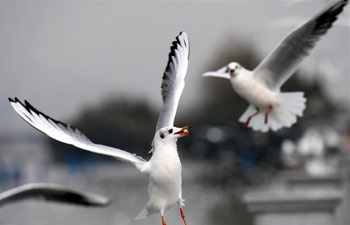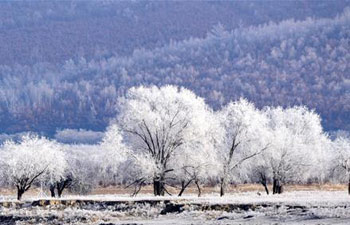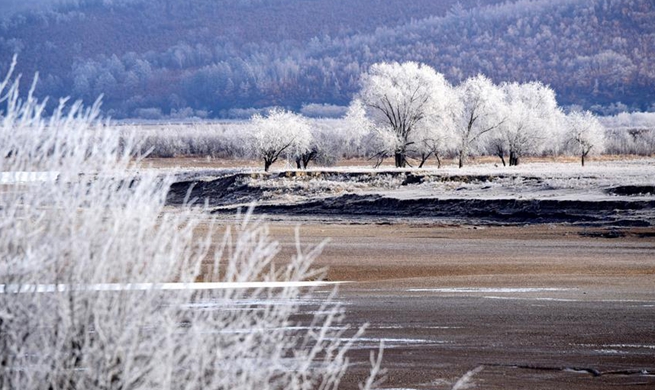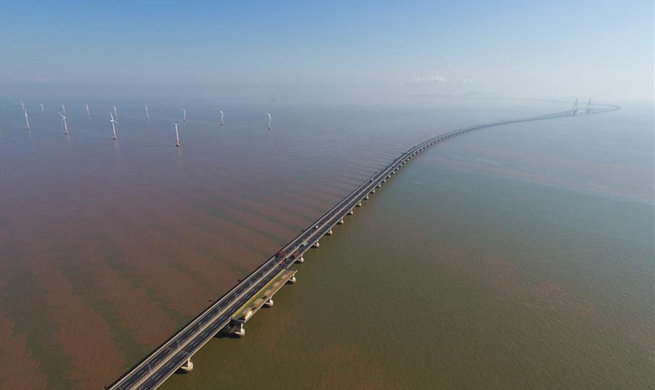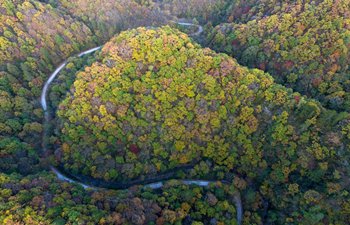WASHINGTON, Nov. 6 (Xinhua) -- Rorqual whales are known for their impressive lunge-feeding behavior, which involves lunging forward with mouth opened wide to engulf and filter large quantities of prey-laden water.
But researchers reported Monday a surprising discovery that a species of rorqual whale called Bryde's whales also find food in a much more relaxed way: they simply lift their heads at the surface, allowing water and prey to flow in.
This report of "tread-water feeding" in Bryde's whales is the first to show a passive feeding behavior in baleen whales, to which rorqual whales belong, according to the study published in the U.S. journal Current Biology.
"Previously, all studies have shown that baleen whales, including rorqual whales, perform active chasing and feeding," said lead author Takashi Iwata, now at the University of St. Andrews in Britain, said in a statement.
"We were surprised to find that Bryde's whales feed on small fish by opening their mouth until the lower jaw contacts the sea surface and waiting for the prey to enter their mouth."
Iwata and colleagues were studying the whales' feeding behaviors in the upper Gulf of Thailand when they noticed them performing this unexpected head-lifting behavior at the surface of the water.
The whales weren't lunging or even moving forward at all, the researchers said. Instead, they were just treading water in place for several seconds at a time.
Overall, the researchers observed the whales feeding in this manner on 58 separate occasions, involving 31 different individual whales.
When a whale kept its upper jaw above the ocean surface, the researchers noticed that many anchovies in the nearby water appeared to lose their sense of direction and, driven by the current, flowed right into the mouths of the whales.
The researchers said it's possible that the whales' behavior is related to conditions in this particular location.
The waters in the upper Gulf of Thailand are low in oxygen as a result of sewage flowing in from the nearby rivers, probably leading the prey that the whales depend upon to be limited to living at the water surface and forcing whales to adapt their feeding strategy.
On the other hand, the researchers said, tread-water feeding is likely to be energetically less expensive than lunge-feeding too.
The findings also suggested that the whales in this location might be learning to feed in this unexpected way from each other.
The researchers' observations included eight pairs of adult whales and their calves.
"Our findings suggest that calves might learn tread-water feeding by imitating adults," Iwata said. "Moreover, because imitation is an important aspect of social learning, the tread-water feeding of the adult-calf pairs in this study implies social learning."
Because tread-water feeding has never been reported before, Iwata suggested that it might be a cultural behavior, learned and passed on within the social group as a means of survival.
The researchers said it's not entirely clear why the small fish appear to lose their bearings and panic when whales tread-water feed.




